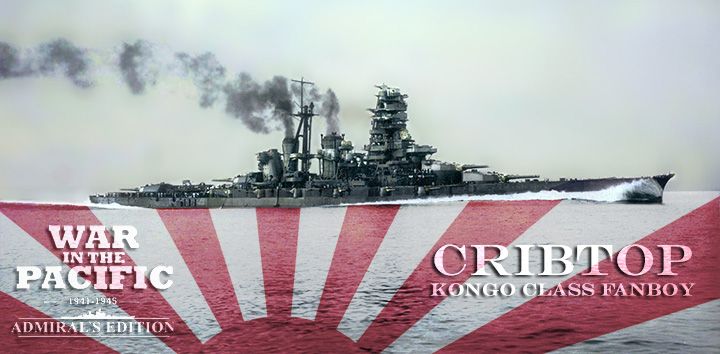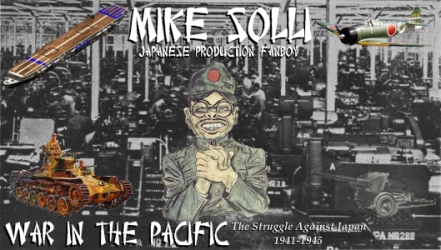Cribtop
Posts: 3890
Joined: 8/10/2008
From: Lone Star Nation
Status: offline

|
Conceptual Planning Document
Proposed Operation Iron Triangle
Region: Southern Army Area of Operations
Begin Report
Imperial General Staff has been asked to consider a proposed all arms operation in response to the enemy invasion of NW Australia at Broome.
Friendly Situation
2nd Army HQ is currently responsible for ground and air defense of NW Australia. Assets include 21st Division, well dug in with supporting artillery at Daly Waters, three garrison units and three independent tank regiments spread in an arc from Nokoonbah through points East of Daly. IJAAF assets include a Sentai of Nicks and recon planes, although local reserves assigned to 16th Army could easily increase this strength by adding another Nick group, a crack Tojo Sentai, a Helen bomber wing (3 Sentai), and a specially trained IJAAF recon unit capable of both photo reconnaissance and naval search.
Some additional forces are available from 16th Army (assigned to defend the critical Timor - Kendari axis) and 25th Army (responsible for Java, Sumatra, Malaya and Borneo), but these formations primarily contain base forces and engineers building a defensive chain rather than significant combat troops. SE Fleet Command has been ordered to transfer 48th Division from Truk to Kendari to increase ground combat power. This leaves only 20th Division and four paratroop units for local reserves in the Pacific.
The IJNAF is strongly positioned to defend 16th Army's AO, with key bases at Lomblen and Denpasar, and numerous secondary bases drawing torpedoes from these main depots. An additional air HQ just landed at Batavia and is en route to Soerabaja. Two elite Zero Hikotai (90 planes total), two G3M3 Hikotai and one Betty Hikotai are available for action (99 planes total). All pilots are crack torpedo attackers. A group of Emily search planes and various shorter range naval search assets are present as well. One limiting factor is that unless the enemy approaches closer to their bases in the Lesser Sunda Island chain, ability to launch escorted strikes against shipping hugging the Australian coast is limited, although the immediate environs of Broome and Derby are in range.
IJN assets in place include an SCTF based around Yamato and Mushashi, with a CVE providing air protection for now. Due to speed limitations imposed by the CVE, we anticipate the small carrier will detach prior to any threat of surface action. The long standing Timor Sea Squadron of four Mogami class cruisers is also ready for immediate action.
All fleet and light carriers save Ryujo are currently approaching, along with an SCTF consisting of four more heavy cruisers, ASW assets and the Fleet Oilers with bunkers 98% full. ETA one week.
Enemy Situation
The enemy has invaded Broome, Australia, with what appears to be the Australian 4th Infantry Division. Whether follow on forces are present with the invasion fleet is unknown at this time, but the size of the invasion TF (9 ships) would make this seem improbable.
The enemy has no land based air assets within range except that unescorted 4E bombers operating from Alice Springs might be able to reach parts of the battle space.
Naval support is supplied by the Royal Navy, backed up by what appears to be the surviving USN fleet carriers. Maximum estimated strength of enemy CVs should be Enterprise, Hornet, Wasp, one or two CVLs or CVEs, one UK CV and one UK CVL (and there could be less). While powerful, this force is inferior to the approaching Kido Butai in both quantity and quality.
Desired End State
In the opinion of Commanding Officer, Combined Fleet, the enemy has handed us an opportunity for Decisive Battle on favorable terms and prior to the introduction of the new enemy carrier fighter designated the "Hellcat" by American aircraft developers.
Desired End State is destruction or disproportionate damage to Allied CV forces as a result of an air-naval battle occurring in a battle space somewhere between the waters off Exmouth and Broome.
Execution
Landing of a relatively small expeditionary force in NW Australia potentially leaves the enemy SLoC, running from Perth to Broome, vulnerable to interdiction by Imperial naval and air assets. Intention is to isolate the Allied beach head with subs, LBA and IJN surface forces, while KB waits over the horizon to the NNW of Exmouth. As enemy losses mount and supplies dwindle (see below for operations against his land LoC), Allied High Command may feel pressured to risk its carrier forces as escorts for a reinforcement/re-supply effort or alternatively an evacuation attempt. Once enemy CV forces cross a line running between Exmouth and Denpasar, they will be subject to air attacks from LBA and Japanese carrier-borne strike aircraft.
The weakness of the plan centers around the lack of IJA ground assets. It is not entirely clear that the Army can stop the enemy from marching on Daly Waters or even Darwin. This force structure is consistent with the Japanese strategic plan of using NW Australia as a delaying effort, a defensive foreground in a broader struggle. Indeed, as 1943 begins, Imperial General Headquarters must implement a recognized set of conditions that would trigger Japanese withdrawal from the Australian subcontinent.
However, if intelligence is accurate and the enemy effort is understrength, 2nd Army would utilize armored thrusts around the flanks of the enemy advance, combined with a counter-invasion at Broome or Derby by 48th Division, to seize the Allied beach head at Broome and cut the advancing army off from supply at a key moment. If done too soon, this will probably cause the enemy to abandon his offensive and simply retreat overland to friendly forces near Tennant Creek. The land moves should thus be a coup de grace rather than an opening gambit. Another rationale for eventual re-capture of Broome is to prevent sufficient seaborne supplies from re-invigorating enemy land units outside of Daly Waters currently suffering from poor overland supply routes.
Hence, Operation Iron Triangle, with three co-operating elements: 1) IJN surface, sub and LBA in the Lesser Sunda chain; 2) IJA ground troops in NW Australia; and 3) Combined Fleet operating from the waters near eastern Java.
End Report
Comments welcome!
_____________________________
|
 Printable Version
Printable Version









 It's been a week!
It's been a week! 



 This has been my experience N=12 [that is 12 times I had this done and noted that the supply LOC's behaved quite differently than I previously expected] over two PBEM games. Suddenly things get back to normal, but in the meantime I could not plan when my supply LOC's would return to "normal." or at least supply the units that are advancing ...... In my current game it took about 40 turns to reestablish supply from Bangkok to Johore Bahru after such an attack.
This has been my experience N=12 [that is 12 times I had this done and noted that the supply LOC's behaved quite differently than I previously expected] over two PBEM games. Suddenly things get back to normal, but in the meantime I could not plan when my supply LOC's would return to "normal." or at least supply the units that are advancing ...... In my current game it took about 40 turns to reestablish supply from Bangkok to Johore Bahru after such an attack.




 New Messages
New Messages No New Messages
No New Messages Hot Topic w/ New Messages
Hot Topic w/ New Messages Hot Topic w/o New Messages
Hot Topic w/o New Messages Locked w/ New Messages
Locked w/ New Messages Locked w/o New Messages
Locked w/o New Messages Post New Thread
Post New Thread